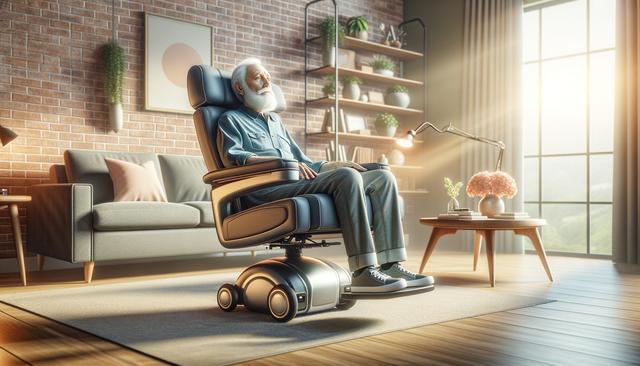
Mobility Recliners: A Comfortable Support Solution for Seniors With Osteoarthritis
Understanding Osteoarthritis and Its Impact on Mobility
Osteoarthritis is a common degenerative joint disease that affects millions of older adults, leading to pain, stiffness, and reduced mobility. For seniors, even everyday movements like sitting down or standing up can become strenuous and uncomfortable. The breakdown of cartilage in joints, especially in the hips, knees, and hands, means that supporting the body’s weight becomes more challenging over time. This condition often limits physical activity, which can, in turn, affect overall well-being and independence.
Maintaining mobility is crucial for seniors’ quality of life. Tools and furniture designed for ergonomic support can significantly reduce the discomfort associated with osteoarthritis. Among these, mobility recliners serve a unique purpose by combining support, comfort, and mechanical assistance, helping older adults move more freely and safely within their own homes.
Key Features of Mobility Recliners for Osteoarthritis
Mobility recliners are thoughtfully engineered to address the specific needs of individuals with limited joint function and chronic pain. These chairs generally come with features that directly benefit seniors living with osteoarthritis. Several of the most beneficial features include:
- Lift-assist mechanism: Helps users transition from a seated to a standing position without straining their joints.
- Ergonomic design: Supports proper posture and evenly distributes body weight to minimize joint pressure.
- Adjustable recline levels: Allows users to find a comfortable position that suits their mobility and comfort needs.
- Remote control operation: Makes it simple to adjust chair positions without physical effort.
These features not only enhance comfort but also promote a greater sense of autonomy for seniors, enabling them to perform daily tasks with less assistance. When shopping for a mobility recliner, it’s important to consider individual needs, such as height, weight capacity, and preferred materials, to ensure a proper fit and maximum benefit.
How Recliners Promote Independence at Home
One of the most notable benefits of mobility recliners is their ability to support independent living. For elderly individuals with osteoarthritis, maintaining independence often correlates with maintaining dignity and mental well-being. A recliner that assists with movement reduces reliance on caregivers or family members for help with sitting or standing.
In addition to lift-assist, many recliners are designed to support multiple positions, including reclining for rest or elevating the legs to reduce swelling—a common issue among those with joint problems. This flexibility allows users to engage in daily activities such as reading, watching TV, or napping in comfort, without needing to move between different pieces of furniture.
Moreover, many models come with built-in storage pockets or cup holders, adding to the convenience and functionality of the living space. This thoughtful design further enhances the user’s ability to remain self-sufficient throughout the day.
Choosing the Right Mobility Recliner
Selecting the right recliner involves more than just picking a chair that looks comfortable. Seniors and their caregivers should consider a few key factors to ensure the recliner meets both health and lifestyle needs. Important considerations include:
- Size and space: Measure the room where the recliner will be placed to ensure it fits without obstructing movement.
- User height and weight: Make sure the chair is proportionate to the user’s body to provide optimal support.
- Ease of use: Check that the controls are simple and accessible, especially for those with limited hand mobility.
- Material choice: Look for durable, easy-to-clean fabrics that are soft but supportive.
It’s also helpful to test different chair models in person, if possible, to assess comfort and functionality. For those purchasing online, reviewing detailed specifications and customer feedback can provide valuable insight.
Maintaining and Using a Mobility Recliner Safely
Proper maintenance of a mobility recliner ensures it remains a safe and effective tool for daily use. Regularly checking the mechanical components, such as the motor and lift mechanism, can help prevent malfunctions. It’s also wise to keep the area around the recliner free of clutter to avoid tripping hazards.
To maximize safety and comfort, users should follow all manufacturer guidelines on operating the chair. This includes not exceeding weight limits, using the recliner on level surfaces, and avoiding quick or jerky movements when transitioning between positions.
Caregivers can play a supportive role by educating users on the proper use of the recliner and assisting with adjustments as needed. Some models also offer warranty and service plans, providing peace of mind in case repairs are needed down the line.
Conclusion: Enhancing Daily Life With the Right Support
For seniors living with osteoarthritis, a mobility recliner can be a valuable addition to the home. These chairs offer more than comfort—they provide support, promote independence, and help reduce the physical strain that often accompanies joint pain. By choosing a mobility recliner tailored to individual needs, elderly users can enjoy greater ease in daily movement and a higher quality of life.
Investing in thoughtful, functional furniture is one step toward creating a safer and more comfortable living environment. Whether used for resting, reading, or simply transitioning from sitting to standing, a mobility recliner can make everyday life more manageable for those navigating the challenges of osteoarthritis.


